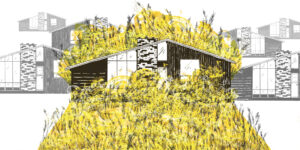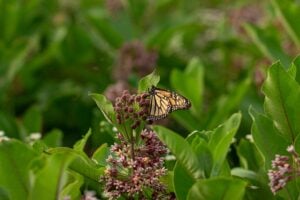Zoos and aquariums have traditionally been seen as places for entertainment and education, but as biodiversity loss accelerates around the world and scientists sound the alarm about a sixth mass extinction driven by humans, some leading institutions are repositioning themselves as centres for conservation research.
An important way zoos can renew their social contract with the general public is by publishing peer-reviewed papers, says Albrecht Schulte-Hostedde, the Canada Research Chair in Applied Evolutionary Ecology at Laurentian University.
Peer-reviewed papers means the research is evaluated by one or more experts in the same field, which in turn gives zoos more credibility in their mission to conserve Earth’s ecosystems and species.
“If zoos commit to doing that peer-reviewed research, then it allows them to share that research with other institutions around the world,” he explains. “Peer-reviewed research is a form of quality control to make sure you are doing rigorous research.”
Schulte-Hostedde and graduate student Breanna Pyott recently completed an inventory of peer-reviewed research published by Canadian zoos and aquariums between 1993 and 2017. Their study focused on institutions that are members of Canada’s Accredited Zoos and Aquariums (CAZA), which requires that members adhere to strict standards for animal care and demonstrate a focus on applied conservation.
They found that while there has been an increase in peer-reviewed research over time, most peer-reviewed papers focus on the veterinary aspects of the zoo’s work instead of biodiversity conservation.
Moving beyond veterinary research is important, Schulte-Hostedde explains, as veterinary research tends to focus on case studies of specific animals which cannot be generalized in the same way as conservation research.
“A case study on a raccoon at a rehabilitation centre is a lot different than a study on the effects of head-starting in Blanding’s turtles,” he says, adding that in the latter, “there is more investment, time and money that is spent in tracking animals and seeing the effects of conservation interventions.”
Schulte-Hostedde does acknowledge the importance of veterinary research, noting that zoos build their credibility with the general public by providing exceptional care for the animals in their facilities.
“But, we argue that if they are going to continue to do research and conservation, getting more credibility with governments and the general public means producing peer-reviewed research just as scientists do,” he says.
Conservation research at Canada’s top zoos
Of the institutions Schulte-Hostedde and Pyott studied, the Toronto Zoo was found to have the greatest number of peer-reviewed publications — 182, with 1,772 citations.
The zoo has a long history of conservation work with various terrestrial and aquatic species, including the black-footed ferret (which is extirpated in Canada), wood bison, Blanding’s turtles and freshwater mussels.
“Wild animals and habitats are facing threats unlike ever before,” says Dolf DeJong, chief executive officer of the Toronto Zoos. It’s vital that researchers at the zoo be able to share their knowledge with the broader scientific community in peer-reviewed publications.
“Making sure that work is recognized and making sure we get it into those records for other researchers to build on is so important,” he says.
The Toronto Zoo is especially proud of their work with Blanding’s turtles, DeJong says. A decade ago, there were fewer than 10 of the turtles left in the Rouge River Valley, which cuts through a densely urbanized part of the Greater Toronto Area, but since then the zoo has raised and released about 300 of them and plans to continue that work.
The zoo has also done extensive work with freshwater mussels. Though many people don’t think much about the bivalves, they are integral to aquatic ecosystems.
“When we talk about our mission — connecting people, animals and conservation science to fight extinction — this original research is critical to achieve that,” says DeJong.







